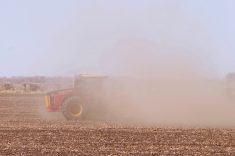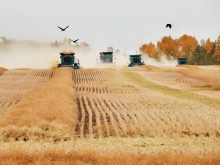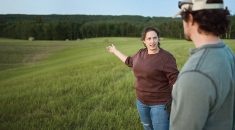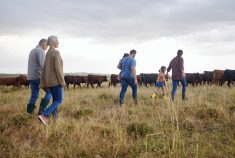In central Manitoba, two brothers we’ll call Sam and Fred, each in his 30s, inherited a successful third-generation farm with a notional value of $1 million and split fifty-fifty as a result of an estate freeze. Their parents took a $10-million slice of farm capital in preferred shares. Growth of farm value after the freeze goes to the brothers in equal amounts.
Nathan Heppner, a certified financial planner, and Erik Forbes, a registered financial planner, reviewed the brothers’ farming interests for Forbes Wealth Management Ltd. in Carberry, Man., and advised Sam and Fred. If the farm prospers and achieves growth at 7.2 per cent per year, as it has done in recent years, then in 25 years, each brother will have a $28.5-million interest. At four per cent growth, their interest will be $13.3 million each.
Problems arise if one brother dies or becomes unable or unwilling to manage his part of the farm. Each brother will have his own heirs with distinct interests. And, over time, the brothers’ interests may diverge. The challenge is to anticipate changes of status (married or not), mates, children and even the vagaries of life such as premature death or disabling injury. Serious illness or injury that affects a brother’s ability to work also needs to be anticipated, Heppner notes.
A buy/sell agreement can give priority to the surviving brother. However, if the surviving brother or heirs do not want to continue farming, then the survivor will have to purchase shares from his brother’s heirs.
Read Also

Gentle treatments for pain in the neck
Heading toward year-end, people unknowingly tense up against the cold and busyness, causing neck pain that can often be treated with appropriate support and gentle mobility, athletic therapist Kathlyn Hossack says.
It will take money to shift interests under these conditions. The survivor could use cash in the corporation, borrow needed funds or use life insurance. The planning problem is to anticipate value in what could be several decades in the future.
Each brother could have several children or marital issues. As a backstop, the corporation could set up a compulsory first refusal contract for each brother or have a first in line default payback for any and all farm assets held or make the corporation a creditor first in line for loan repayments. Thus, an attempt by a disgruntled spouse of either brother would require waiting in line behind the prior creditor for payment, Forbes explains.
Assuming the corporation is valued at $60 million, each brother has equity of $25 million with $10 million in preferred shares to the parents. When both brothers have died, the full amount of future equity must be paid out to the heirs. Assuming they have contributed equally, a fifty-fifty asset division would be fair and reasonable. To anticipate unequal contributions, a plan can be devised to apportion farm value on the basis of work done or other contributions made measured in work, capital investment, loans to the corpora- tion or other means, Heppner adds.
There are three cases:
1. If there is sufficient cash in the corporation, it could be used to redeem the shares of the deceased brother.
2. If there is not enough cash, then the corporation would have to sell some assets to raise the needed cash.
3. The corporation or the surviving brother might borrow funds needed. However, raising cash from land or equipment sales would be cumbrous and could entail hefty transactions costs.
Life insurance would provide cash on the death of either brother with the farming corporation as beneficiary of the policy. The death benefit would be a credit to the farm’s capital dividend account in an amount equal to the death benefit less the adjusted cost base of the policy. In this arrangement, the capital dividend account (CDA) functions as a notional account to allow the corporation to pay out a tax-free dividend. Then the CDA would eventually flow to the heirs of the deceased brother as payment for shares. It’s worth noting that if funds are invested in a corporate investment account, taxes still need to be paid.
But with a life insurance policy, the funds would flow to beneficiaries without tax.
Life insurance is always a pay first, draw benefits later contract. Under Canadian law, benefits are regarded as the property of the designated beneficiary. Therefore, claims for injury or insolvency do not reach the beneficiary, Forbes clarifies.
Sam and Fred need to take advice from their lawyers, accountants and farm advisers to get their individual interests aligned in a compatible fashion. There are inevitably upfront fees, most of which are deductible from taxes.
If the farm prospers and throws off cash surplus to its costs, the brothers will have the choice and challenge of diversifying into things they may not know as well as farming or sticking to the farm and adding to its capital. They can cover debts, death of one brother, future family interest and even creditors. However, to the extent that risk grows with time hedged only by present capital or future benefits provided by insurance, they have to carry risk over generations. Keeping each other and their mates informed about their farm’s fortunes is the best way to manage risk and family, Heppner concludes.















